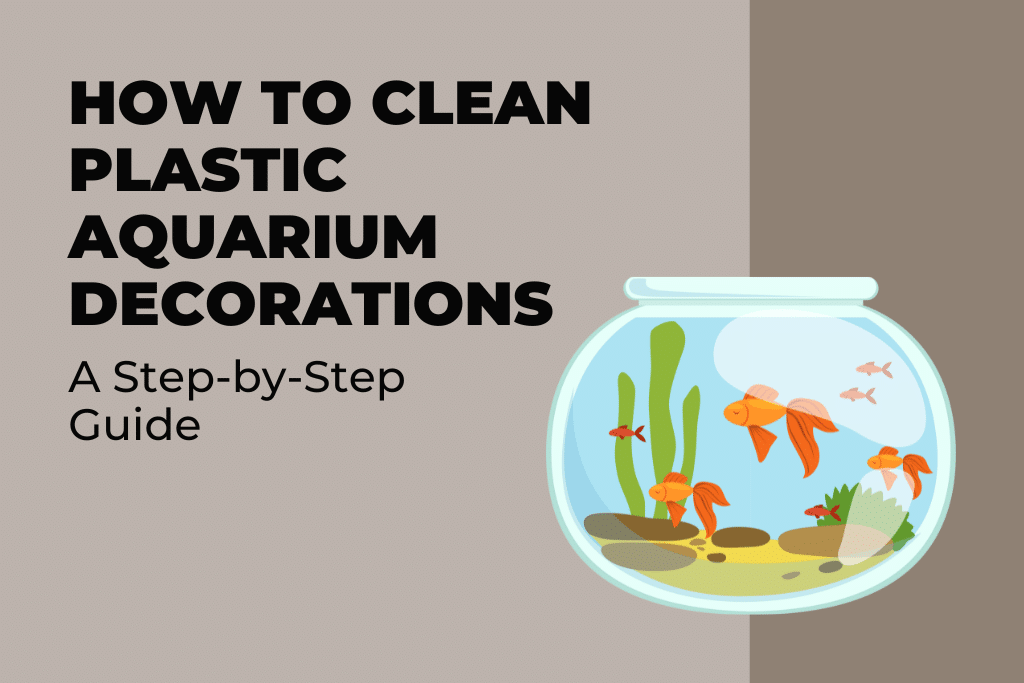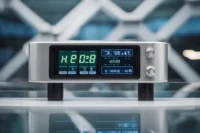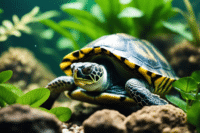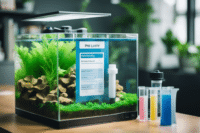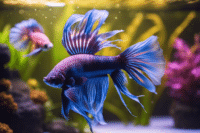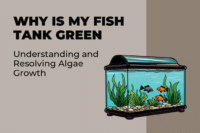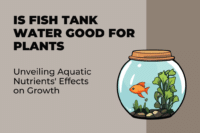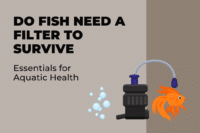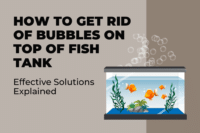Maintaining the cleanliness of plastic aquarium decorations is not only vital for the aesthetics of your tank but also for the health of its inhabitants. Over time, algae and other organic materials can accumulate on decorations, potentially affecting the water quality and providing an unsuitable environment for fish and plants. Cleaning these decorations requires careful handling to avoid introducing harmful chemicals to the delicate ecosystem of your aquarium.
The process involves a few steps that start with preparing the items for cleaning by removing them safely from the aquarium to avoid causing stress to the fish. Suitable cleaning methods like the use of gentle cleaning solutions or bleach solutions at recommended dilution rates can effectively remove algae and grime without damaging the decorations or posing a risk to aquarium life. After cleaning, it’s crucial to thoroughly rinse and dry the decorations to remove all traces of cleaning agents, ensuring they are safe to go back into the tank.
Key Takeaways
- Regular cleaning preserves the look and health of your tank.
- Use safe cleaning solutions and proper dilution.
- Rinse decorations thoroughly to eliminate residue.
Preparing for Cleaning
Before starting the cleaning process of plastic aquarium decorations, one should gather the necessary supplies and create a safe working environment. Cleaning plastic aquarium decorations is an integral part of aquarium maintenance and contributes to the health and clarity of the aquatic ecosystem.
First, select a bucket that will be used exclusively for aquarium purposes to avoid contamination. Fill this bucket with hot water—hot enough to assist in breaking down algae and grime, but not boiling, as extreme temperatures can damage some decorations.
For an eco-friendly cleaning agent, vinegar offers effective results without leaving harmful residues. Prepare a solution of equal parts water and vinegar for soaking the decorations. Alternatively, a mild bleach solution can be used; it is efficient at removing stubborn algae and should be composed of a 10% solution—nine parts water to one part bleach. Here’s how to make the bleach solution:
- 9 parts water
- 1 part bleach
Remember, when handling bleach, adequate ventilation is necessary to prevent the inhalation of fumes. Wearing protective gear, such as rubber gloves, protects the skin from irritation.
Ensure that regular water changes are performed in the aquarium to minimize the need for intense cleaning sessions. Timely maintenance of the tank and its accessories can prevent the buildup of algae and waste, thereby simplifying the cleaning process.
Gather your supplies, put on your protective gear, and ensure that the space is well-ventilated before beginning the decoration cleaning routine. This preparation will lead to a safer and more effective cleaning experience for both the cleaner and the aquatic inhabitants.
Cleaning Methods
Cleaning plastic aquarium decorations is essential for the health of the tank inhabitants and the aesthetic appeal of the environment. There are several effective methods ranging from physical scrubbing to safe chemical use.
Physical Cleaning
Physical cleaning relies on manual tools to remove dirt and algae. Toothbrushes and soft brushes are ideal for scrubbing off stubborn grime without scratching the surfaces. Sponges work well for gentler cleaning and reaching into crevices. For tougher algae, an algae scraper can be efficient. It is important to rinse decorations thoroughly with water after scrubbing to remove all loose debris.
Chemical Cleaning
When physical methods are insufficient, chemical solutions can be used. A bleach solution—usually a 10% mix—can disinfect and clean decorations as suggested by Fishkeeping Academy. Submerge decorations for about 15 minutes, ensuring they are fully rinsed and dechlorinated before returning to the tank. Alternatively, a vinegar solution is a milder option good for dissolving mineral deposits. Use a 1:1 ratio of water to vinegar, soak the decorations, and scrub off the residue. With chemical cleaners, one must ensure all traces are removed before placing the decor back into the aquarium to avoid harming its inhabitants.
Natural Cleaning
Natural cleaning options include the use of boiling water to kill algae and bacteria as advised by David’s Aquarium Advice. Place decorations in a container and pour boiling water over them allowing them to soak for about 10 minutes. Another natural solution is hydrogen peroxide which can be applied directly to areas with algae. It is a safe alternative for spot treatments, but like all cleaning methods, requires that decorations are rinsed well before being placed back into the tank.
Special Considerations for Decor
When cleaning plastic plants and other decorations in an aquarium, one must take a confident yet cautious approach. These items play a critical role in the aesthetic and ecological balance of the habitat, providing shelter and comfort to the aquatic life within.
Delicate Items:
- Ornaments: Handle with care to avoid breakage.
- Live Plants: Prune dead leaves before cleaning. Avoid any cleaning agent; use dechlorinated water instead.
Disinfecting Decorations:
- Bacteria and Germs: Use a mild bleach solution (5% bleach to water ratio) and soak the decor for no longer than 15 minutes. Ensure all items are thoroughly rinsed in dechlorinated water afterwards.
- Algae Removal: For hardy items, a soft brush may be used to scrub away algae. For delicate items, soaking in a vinegar solution helps loosen algae without causing damage.
Cleaning plastic aquarium plants requires gentleness to avoid tearing. A warm, soapy water solution with a soft brush or sponge can effectively remove debris. Rinse them well to ensure no soap residues remain as it can harm the fish.
Rinsing Process:
Always rinse decorations in dechlorinated water before placing back into the aquarium to protect the tank’s inhabitants.
| Type | Cleaning Agent | Notes |
|---|---|---|
| Plastic Decor | Soapy Water | Rinse thoroughly; no soap residue. |
| Delicate | Vinegar Solution | Gentle on delicate items; avoid bleach. |
| Algae-Covered | Bleach Solution | Brief soak; rinse well afterwards. |
In summary, one must clean fish tank decorations with the utmost care, taking into account the material and the potential impact on the tank’s ecosystem. Neutral and clear guidance ensures the longevity of the decor and the safety of the aquarium’s inhabitants.
Rinsing and Drying
After thoroughly cleaning plastic aquarium decorations, it’s essential to rinse them to remove any cleaning residue. Rinsing should be done using de-chlorinated water to ensure no harmful chemicals remain that could harm the tank’s ecosystem. This can be accomplished using a dechlorinator, a product that neutralizes chlorine and other contaminants found in tap water.
Steps for Proper Rinsing:
- Place the decorations under running water to wash away loose debris and cleaning agents.
- Fill a container with clean water and add the recommended amount of water conditioner.
- Immerse the decorations in the conditioned water, ensuring they are fully submerged.
- Move the decorations gently in the water to ensure all surfaces are thoroughly rinsed.
- Repeat the process with fresh de-chlorinated water if necessary.
After rinsing, the decorations should be dried before being placed back into the aquarium. This step prevents tap water from mixing into the tank, which may contain chlorine or chloramines.
Drying Instructions:
- Gently shake off excess water and place decorations on a clean, dry towel.
- Allow them to air-dry completely; this usually takes a few hours depending on the ambient temperature and humidity.
Tip: For enhanced safety, ensure that the decorations are completely free of moisture to avoid any unwanted substances entering the aquarium water.
Reintroduction to Aquarium
After cleaning plastic aquarium decorations, it’s essential to ensure a safe and healthy environment for the fish. Before reintroducing decor into the aquarium, verify that there is no residual cleaning solution present.
Here’s a step-by-step guide for reintroduction:
- Rinse Thoroughly: All decorations should be rinsed in dechlorinated or aged tap water to remove any traces of cleaning agents.
- Dry Decorations: Pat the items dry with a clean cloth to minimize the introduction of tap water into the aquarium.
- Check Water Quality: Test the aquarium water to ensure it remains within safe parameters for temperature, pH, and levels of ammonia, nitrite, and nitrate.
- Placement: Carefully place decorations back into the tank using a fish net to avoid disturbing the substrate. Position them to provide hiding spots for fish and support beneficial bacteria colonies.
- Aquatic Life: Consider the needs of algae-eating fish and snails when placing the decorations.
- Substrate Cleaning: While the decorations are out, it’s an excellent opportunity to gently siphon the substrate to prevent detritus buildup.
- Balancing Bacteria: To maintain water quality, reintroduce decorations slowly. This will ensure the ecosystem stays balanced and doesn’t overwhelm beneficial bacteria populations.
- Observe Fish Behavior: After reintroduction, monitor fish for signs of stress or discomfort, which might indicate an issue with the cleaning process or water quality.
By following these steps, the reintroduction of aquarium decorations will be seamless, promoting a thriving environment for all aquatic life.
Maintenance and Prevention
When it comes to aquarium cleaning, establishing a routine maintenance schedule is crucial. Preventative measures are as important as the cleaning process itself for keeping plastic decorations free from algae and harmful bacteria.
Regular water changes, typically ranging from 15-25% every two weeks, help maintain water parameters conducive to a healthy aquatic environment. These changes are not only vital for the well-being of the fish but also for minimizing the growth of algae on decorations and tank surfaces.
Utilizing a gravel vacuum during water changes aids in removing debris and waste from the substrate. The vacuum cleaner doesn’t only clean the gravel but also helps in preventing the accumulation of waste, which can degrade water quality and subsequently, the appearance of tank decorations.
For the decorations themselves, a proactive approach involves a gentle weekly wiping to remove any visible algae or sludge, which helps in reducing the need for more aggressive cleaning methods.
It’s also recommended to inspect and clean fish tank decorations during the regular water changes. Doing so allows for close examination and immediate action if there are signs of excessive algae growth or deterioration.
| Routine Action | Frequency | Purpose |
|---|---|---|
| Water Changes | Every 1-2 Weeks | Maintain water quality and clarity |
| Gravel Vacuuming | During Water Changes | Remove debris and waste |
| Decorations Inspection | Weekly | Monitor and wipe off algae |
| Full Decoration Cleaning | Monthly/Bi-Monthly | Thorough cleaning to prevent disease and algae buildup |
By adhering to these maintenance steps with consistency, one can ensure a clean, healthy, and aesthetically pleasing aquarium. It’s the balance of regular maintenance and proactive prevention that provides a thriving environment for aquatic life.
